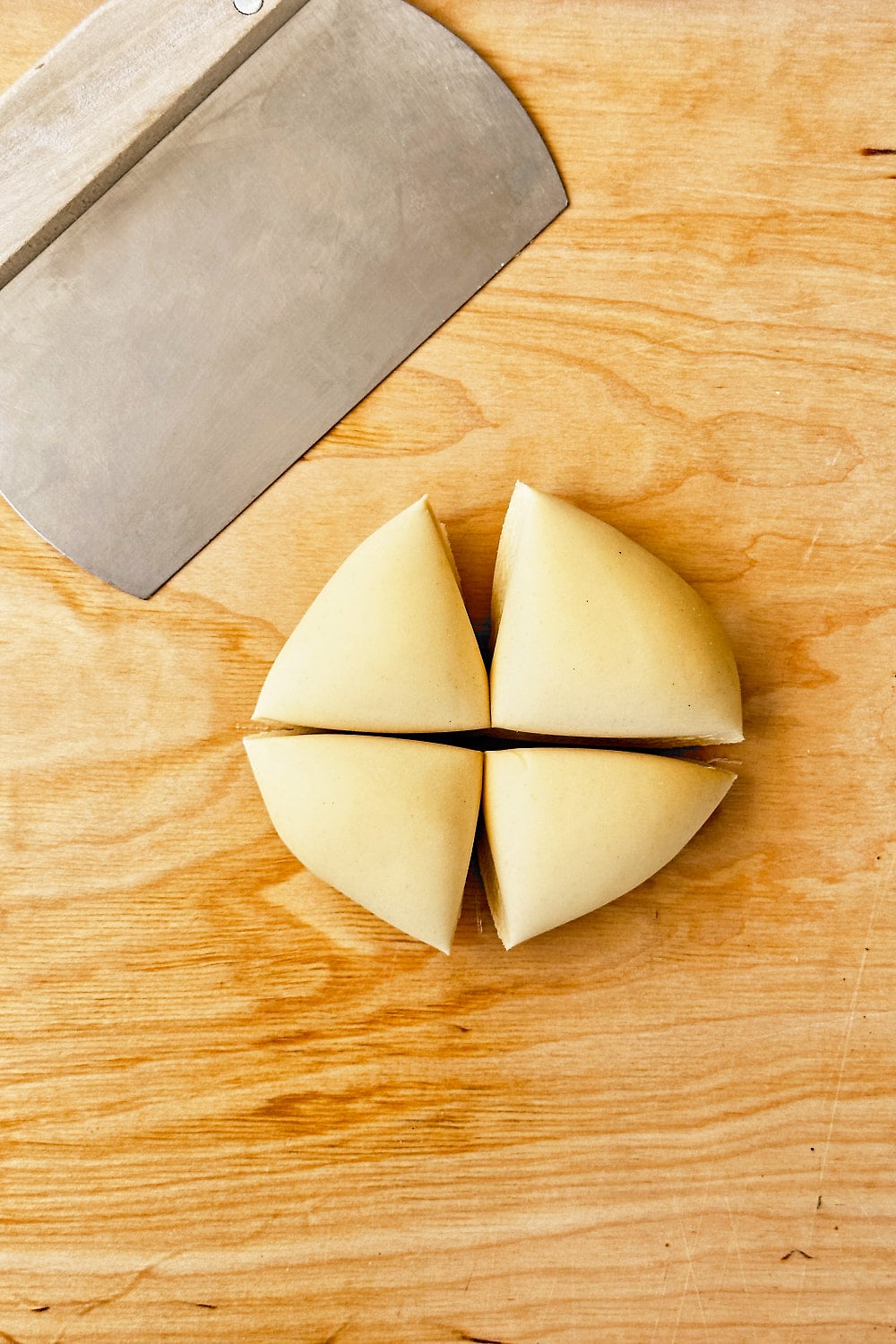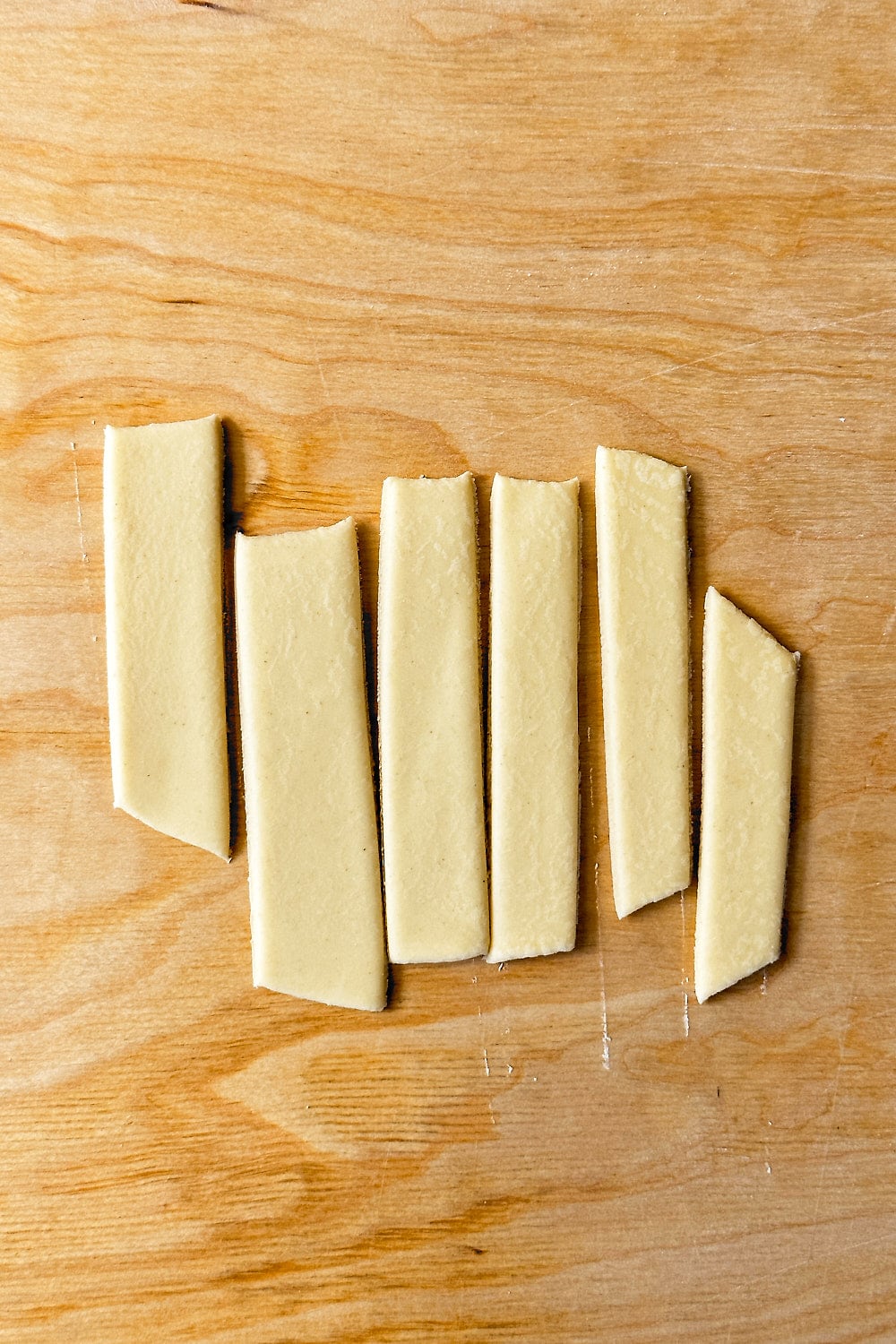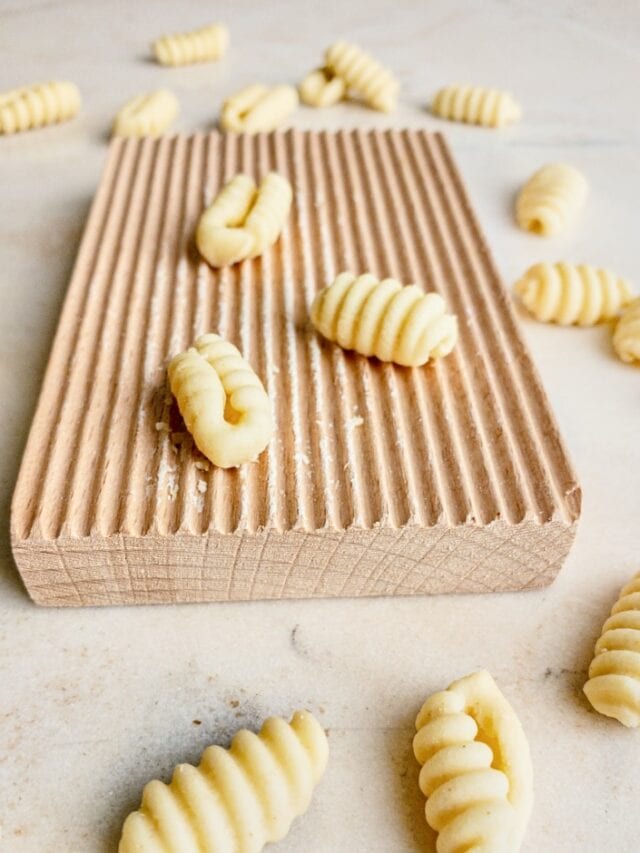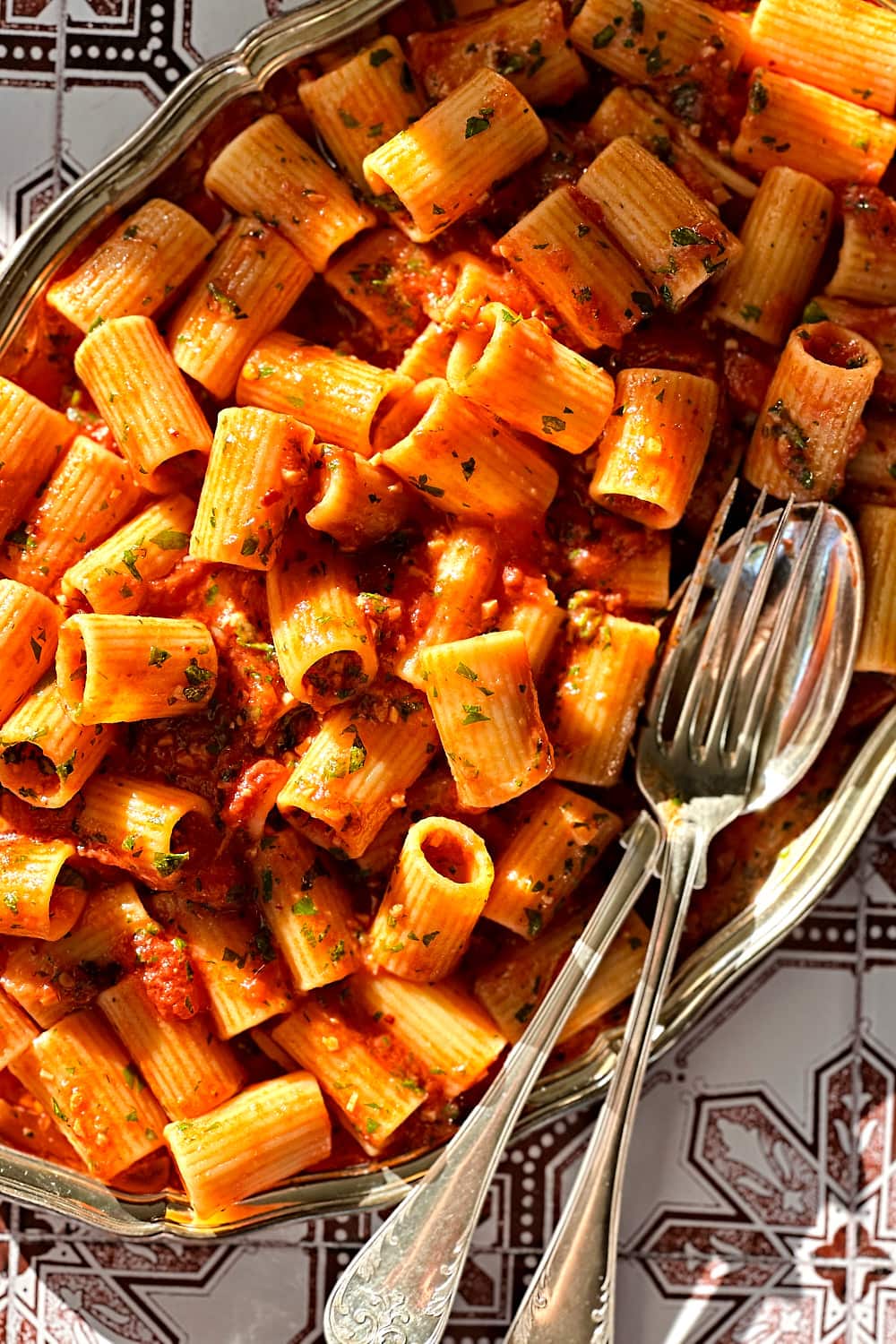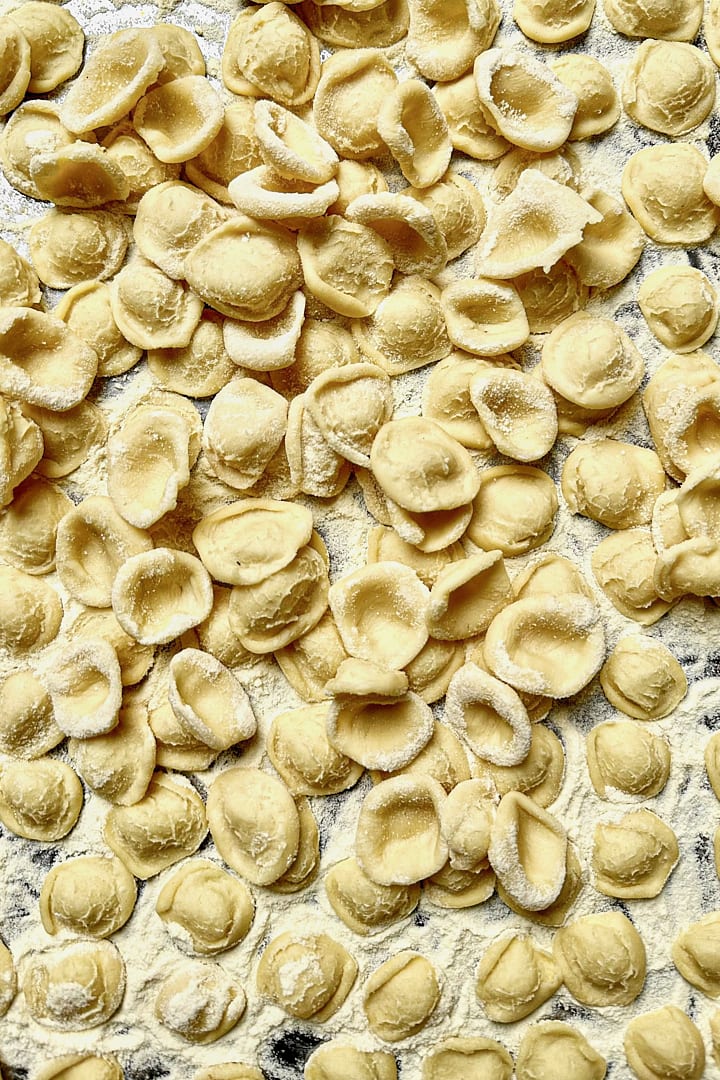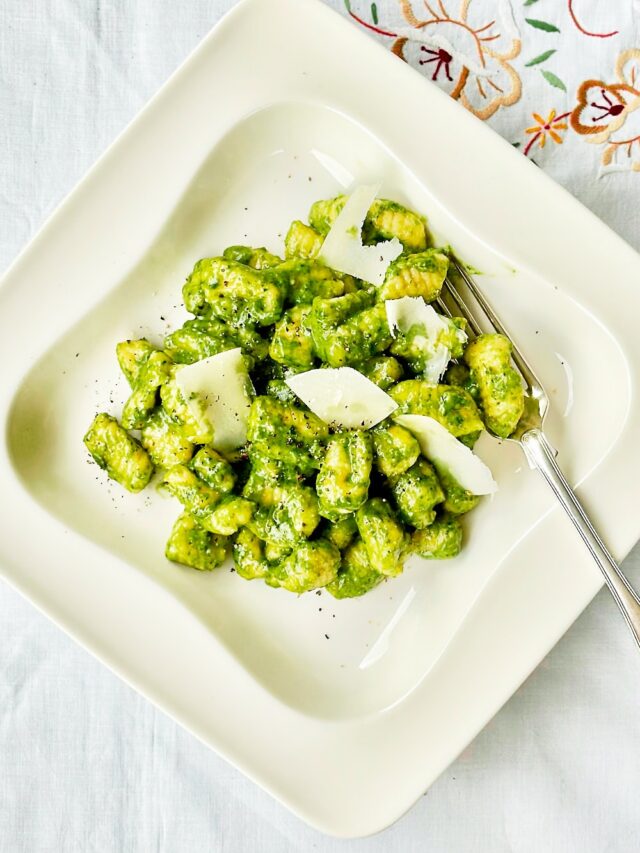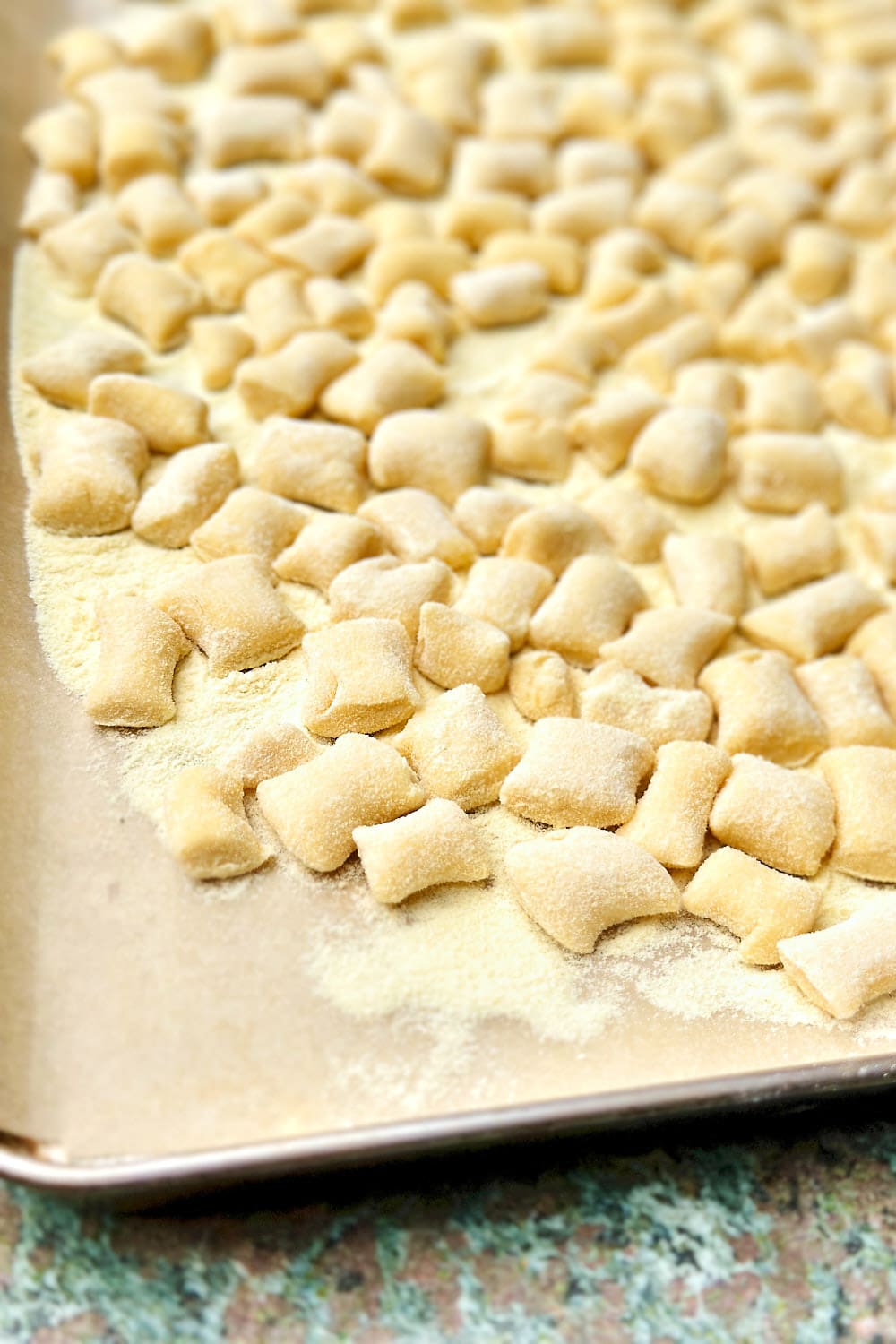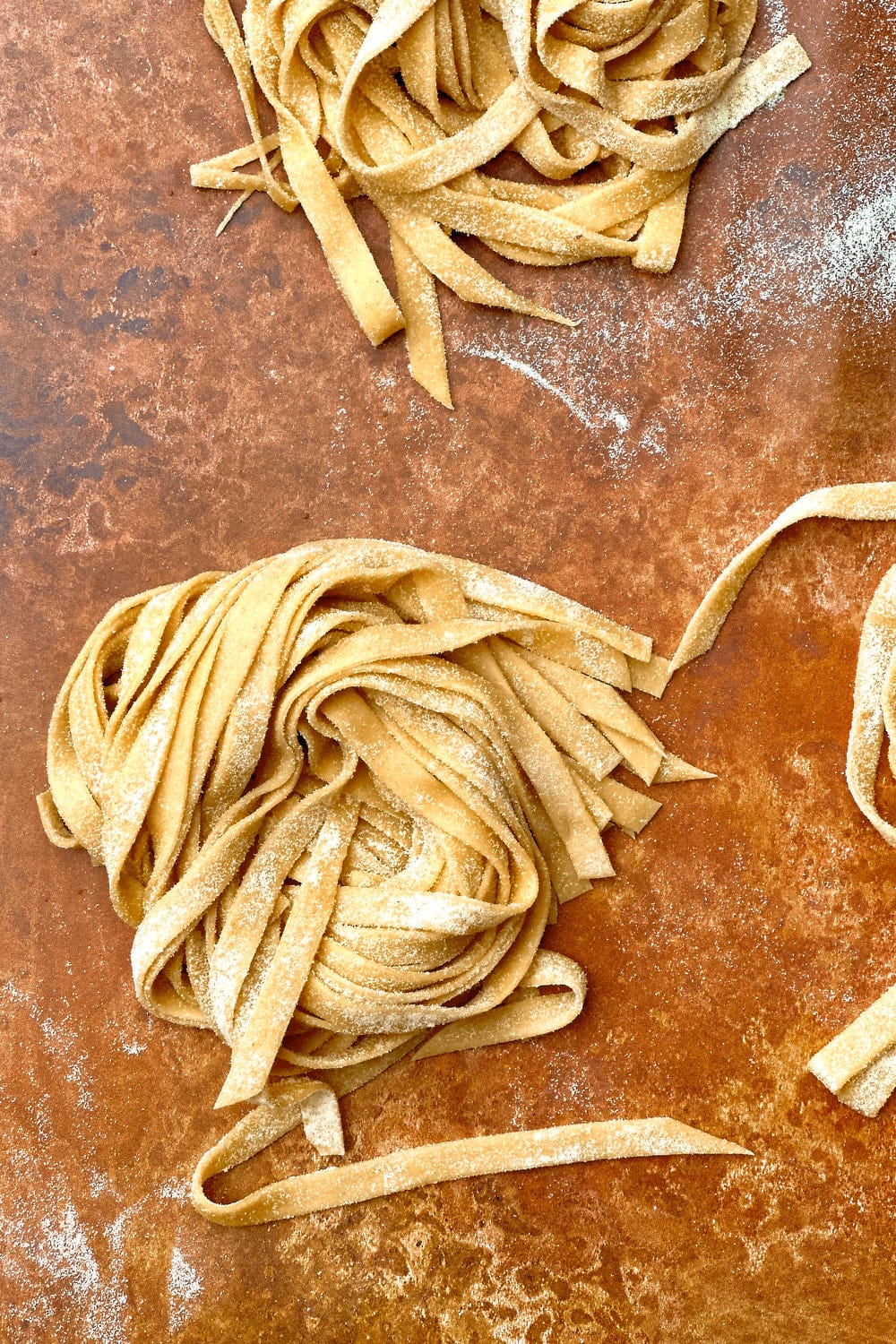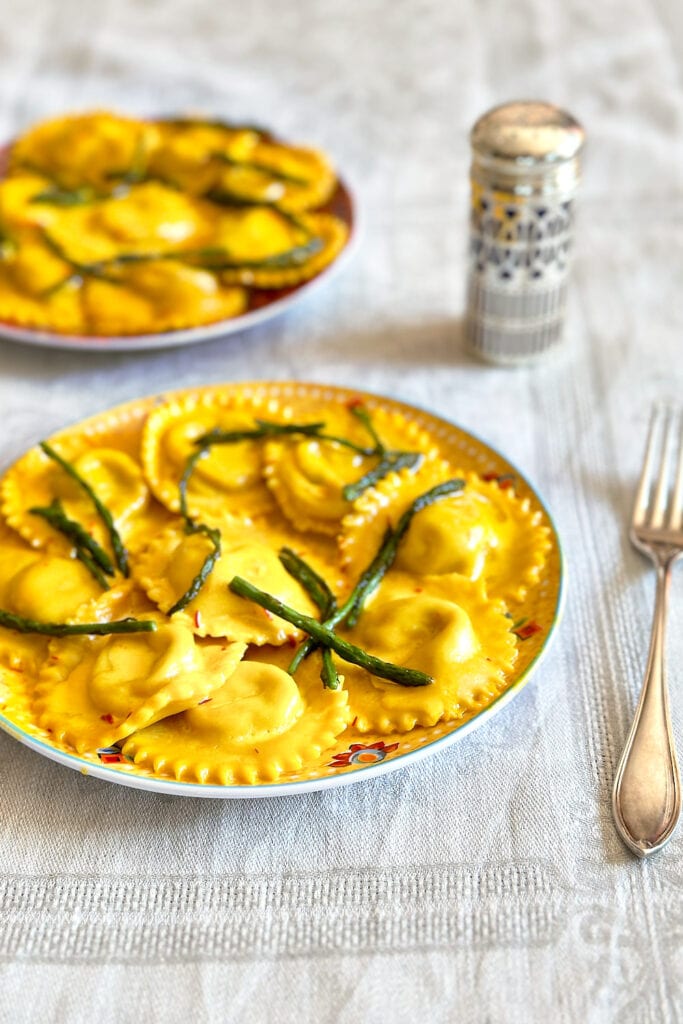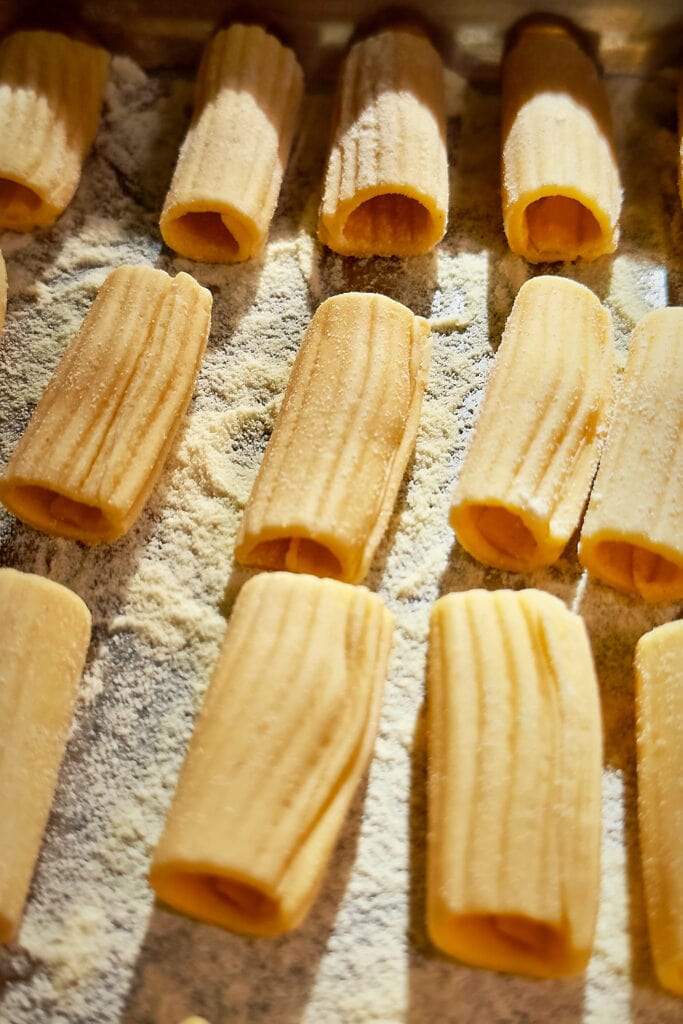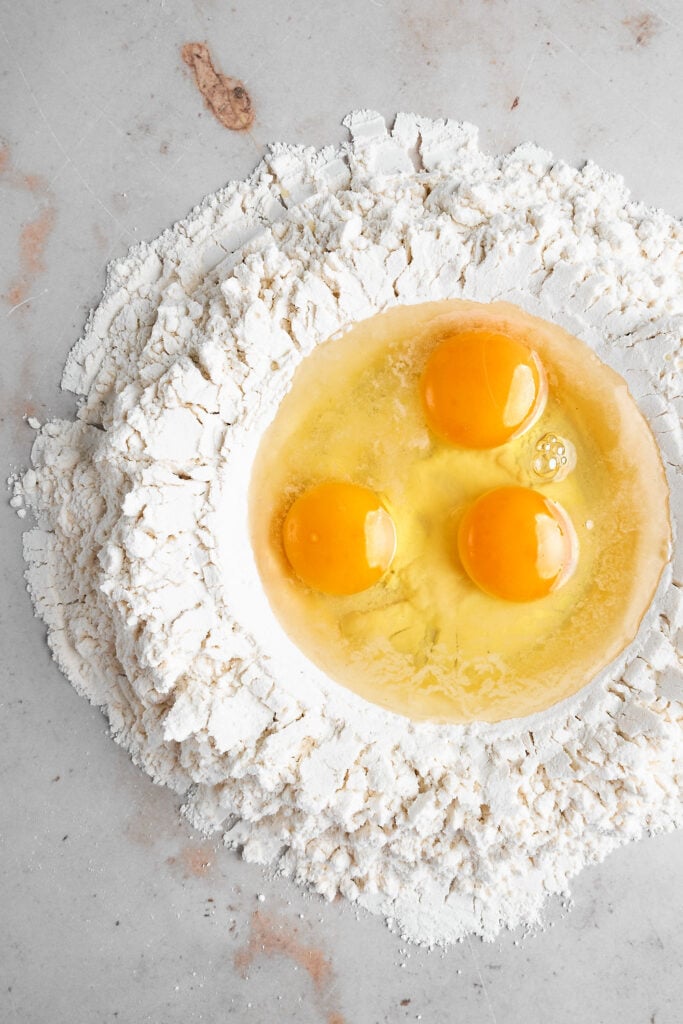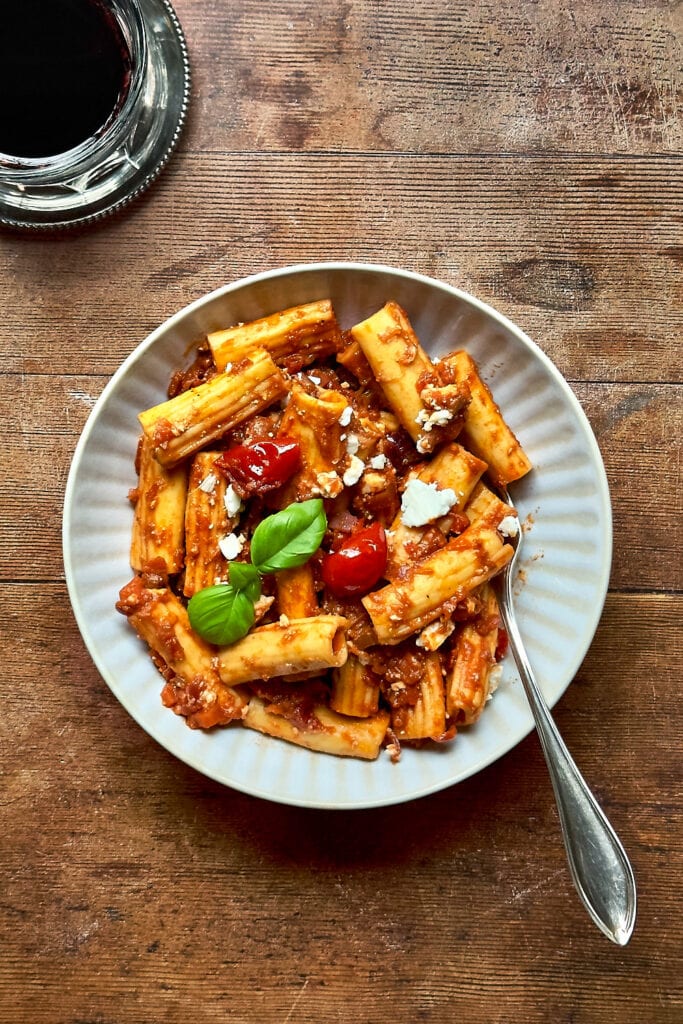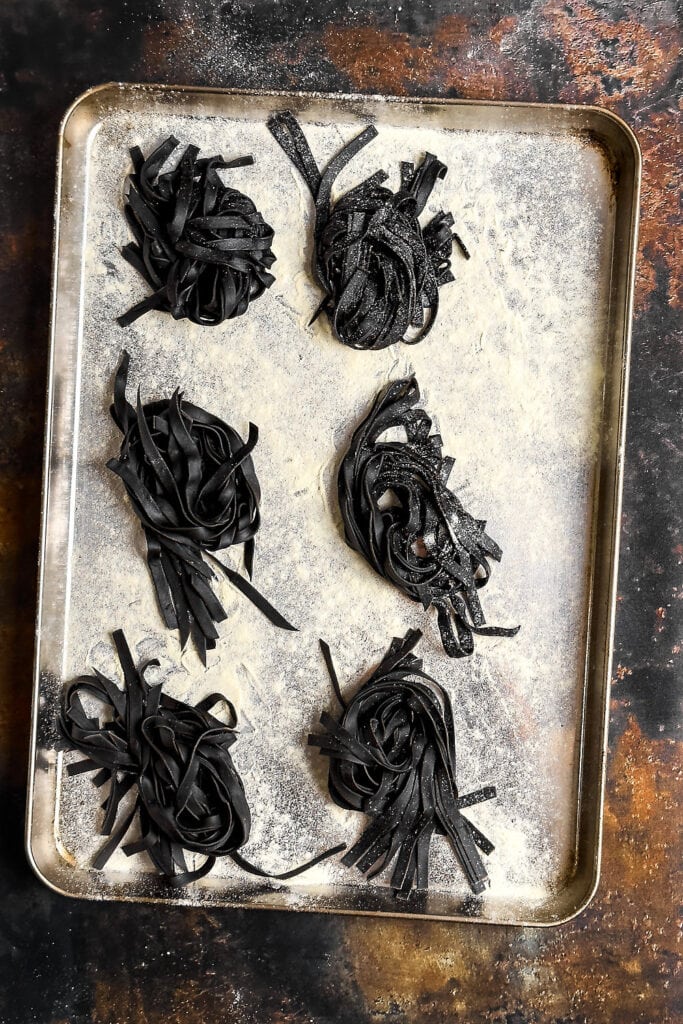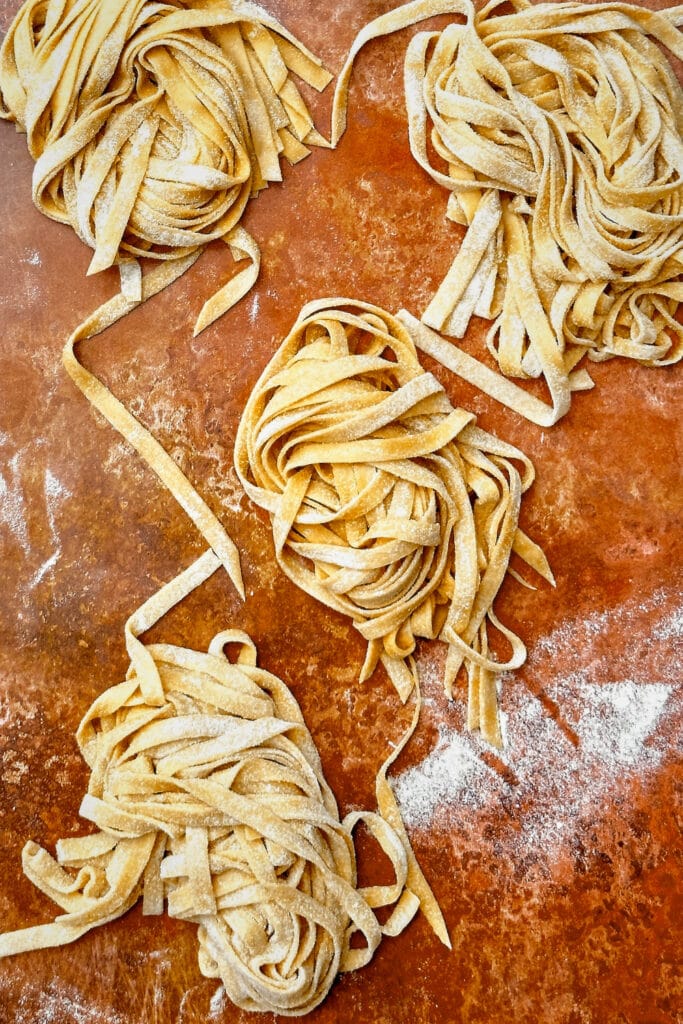How to Make Busiate Pasta From Scratch
Follow this simple guide to make homemade Busiate pasta and learn how to transform a simple eggless pasta dough into beautifully twisted pasta strands. Busiate is a unique, spiral-shaped pasta variety from Sicily. The characteristic shape is achieved by rolling thin pasta strands around a metal rod or wooden skewer. This creates a beautiful coil pattern, similar to an old telephone cord. Busiate pasta is traditionally served with “Pesto alla Trapanese”.
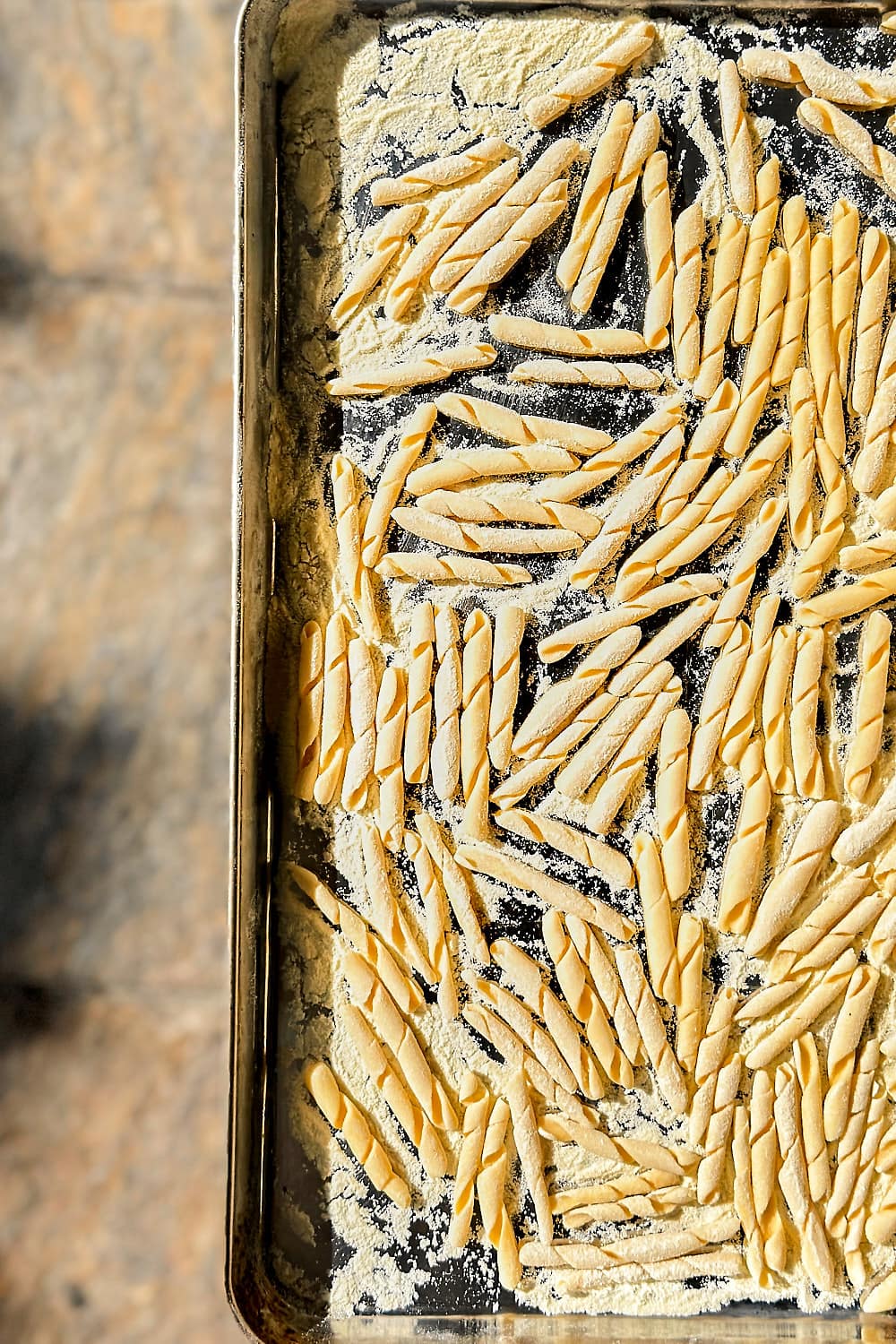
Ingredients and Tools You’ll Need
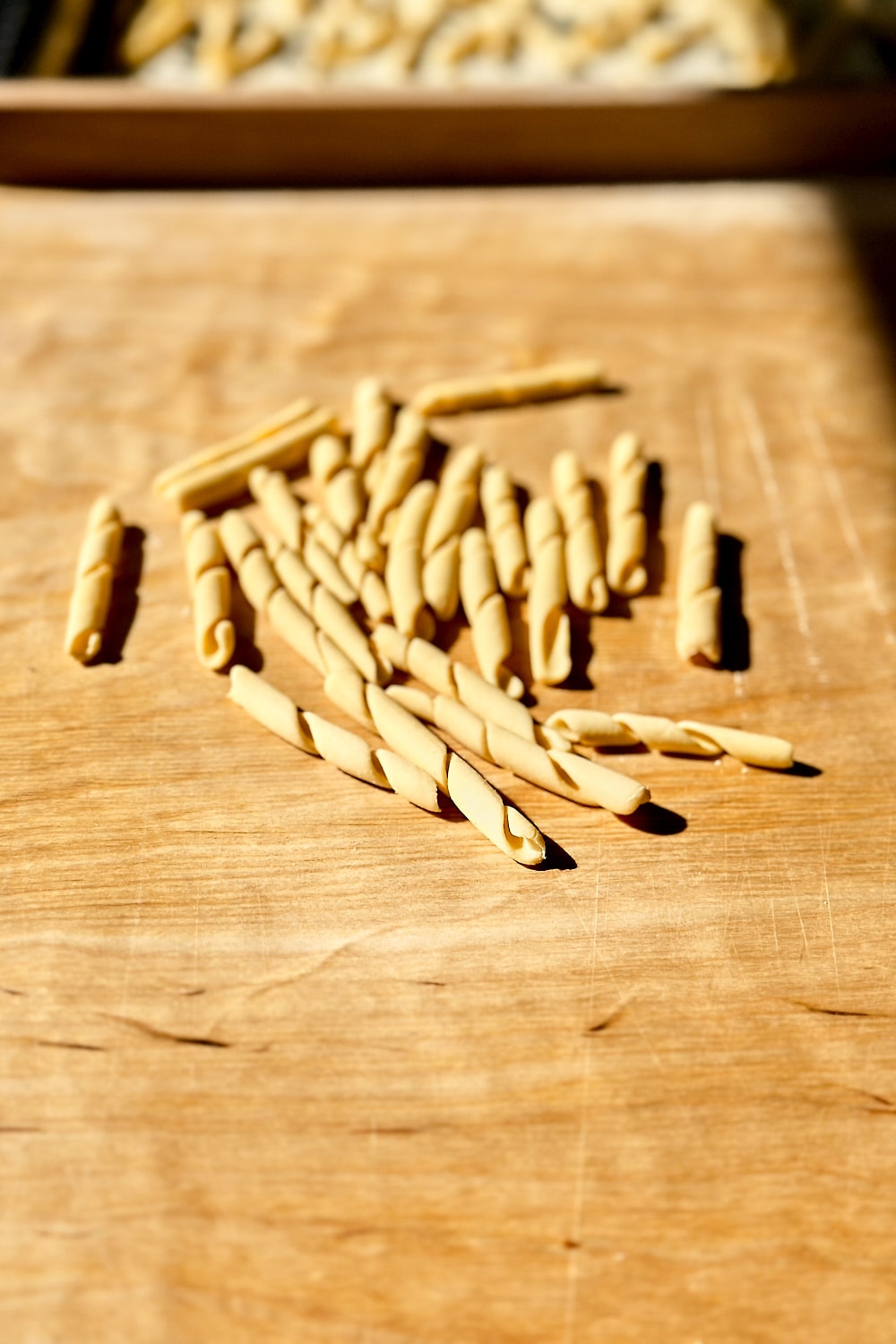
Step-by-Step Instructions
Step 1
Prepare the pasta dough: In a mixing bowl, combine the semolina flour and water. Using a fork, stir to combine the ingredients until it turns into a chunky mass. Dump the mixture out onto your work surface and bring everything together with your hands. Knead for a couple of minutes until a shaggy dough forms. Wrap the dough in plastic wrap and let it rest for about 10 minutes. This first bench rest allows the flour to fully absorb the water, which makes the dough softer and more manageable. After the first rest, unwrap the dough and knead it again for 5 – 7 minutes, until smooth and elastic. Then, tightly wrap it in plastic again and let it rest on your work surface for at least one hour to relax the gluten.
Step 2
Cut off a quarter of the dough and keep the rest well wrapped to prevent it from drying out. Using a rolling pin, roll the piece of dough out to an even thickness. Then, use a bench scraper or knife and cut it into strips (about 1 – 2 cm wide). Pinch the strips together with your thumb and index finger to form strands, and then roll them out into long, thin ropes. This process is very similar to making homemade Pici pasta.
Step 3
Cut the pasta ropes into smaller pieces (about 7 cm long). Lay one piece of dough on your work surface in a vertical position, facing you. Place the wooden skewer diagonally to the top end of the pasta strand (at a 45° angle). Wrap the tip of the pasta strand around the skewer, and then coil the rest of the dough around it by using one hand to gently roll the skewer down towards you. Once the dough is fully wrapped around the rod, use your palm to briefly roll the skewer back and forth, using light pressure. Then, carefully slide the pasta off the skewer and repeat the process with the remaining dough.
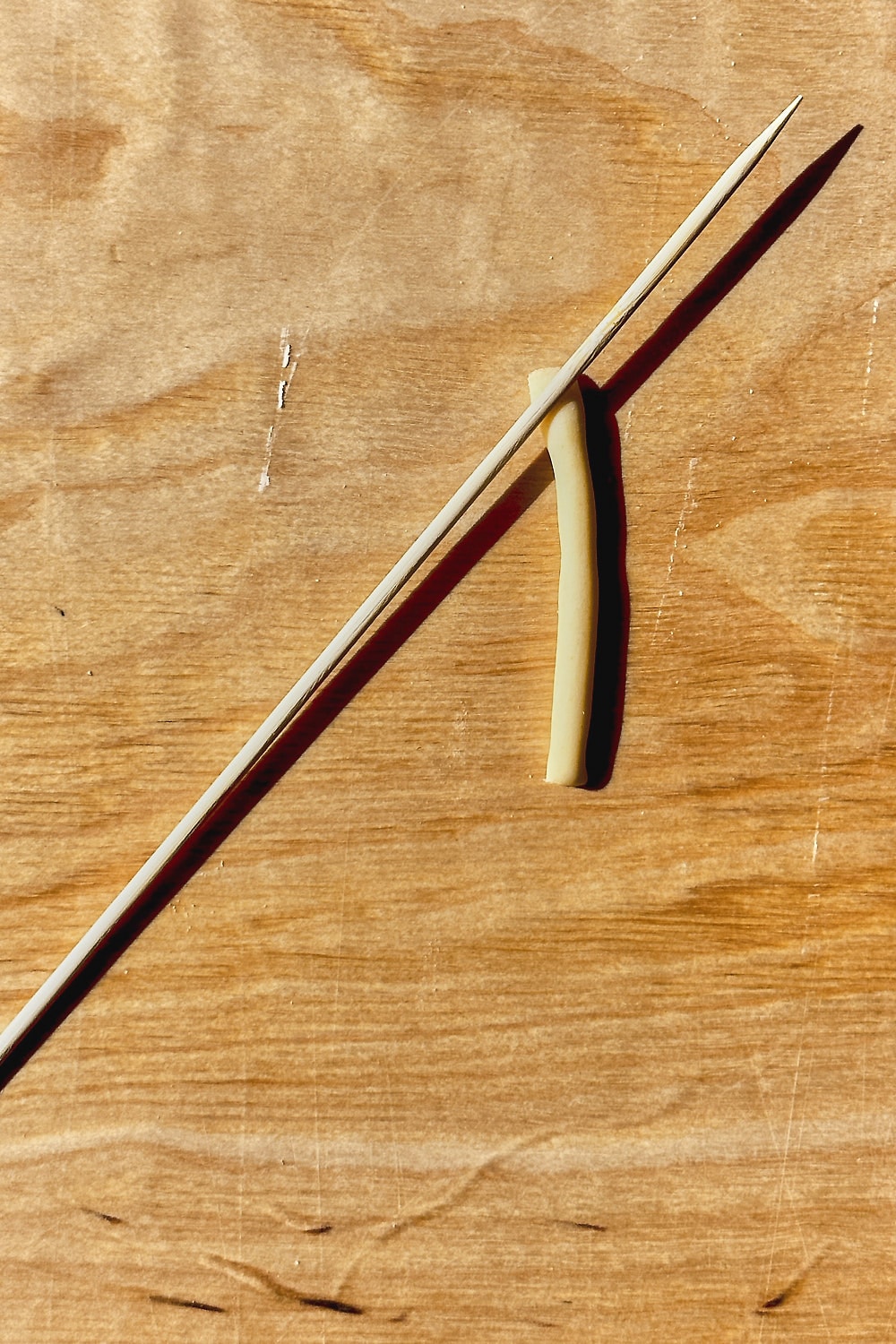
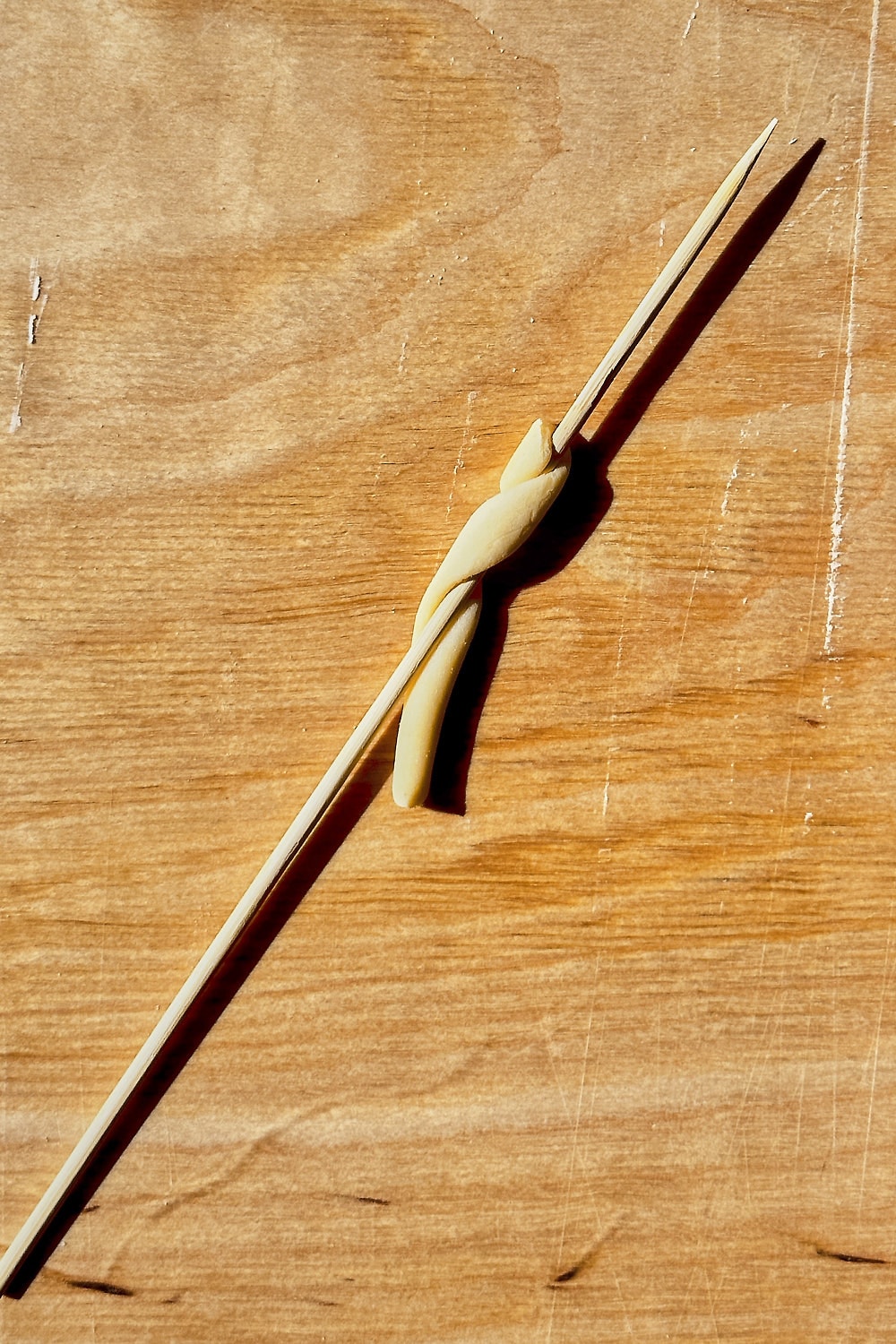
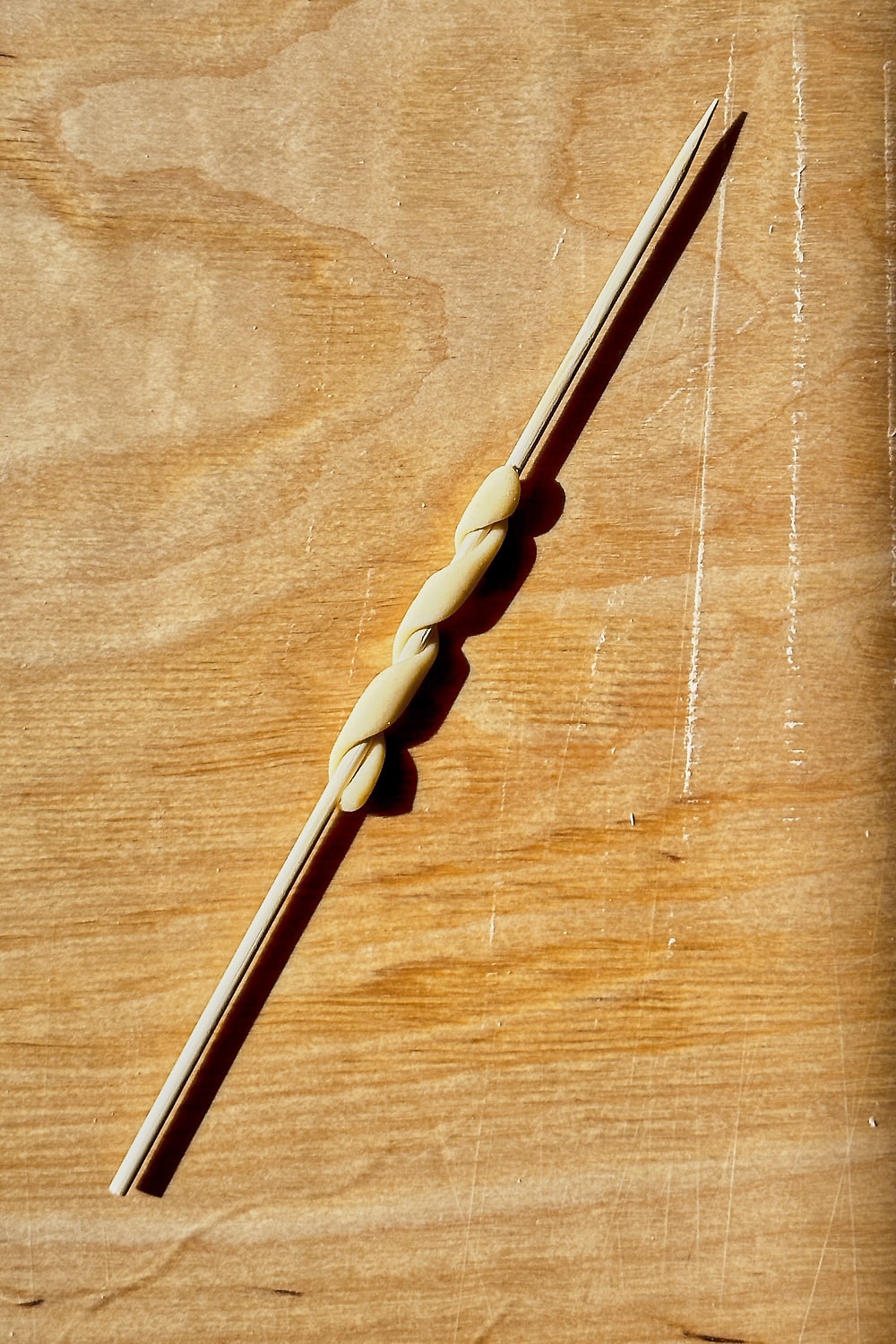
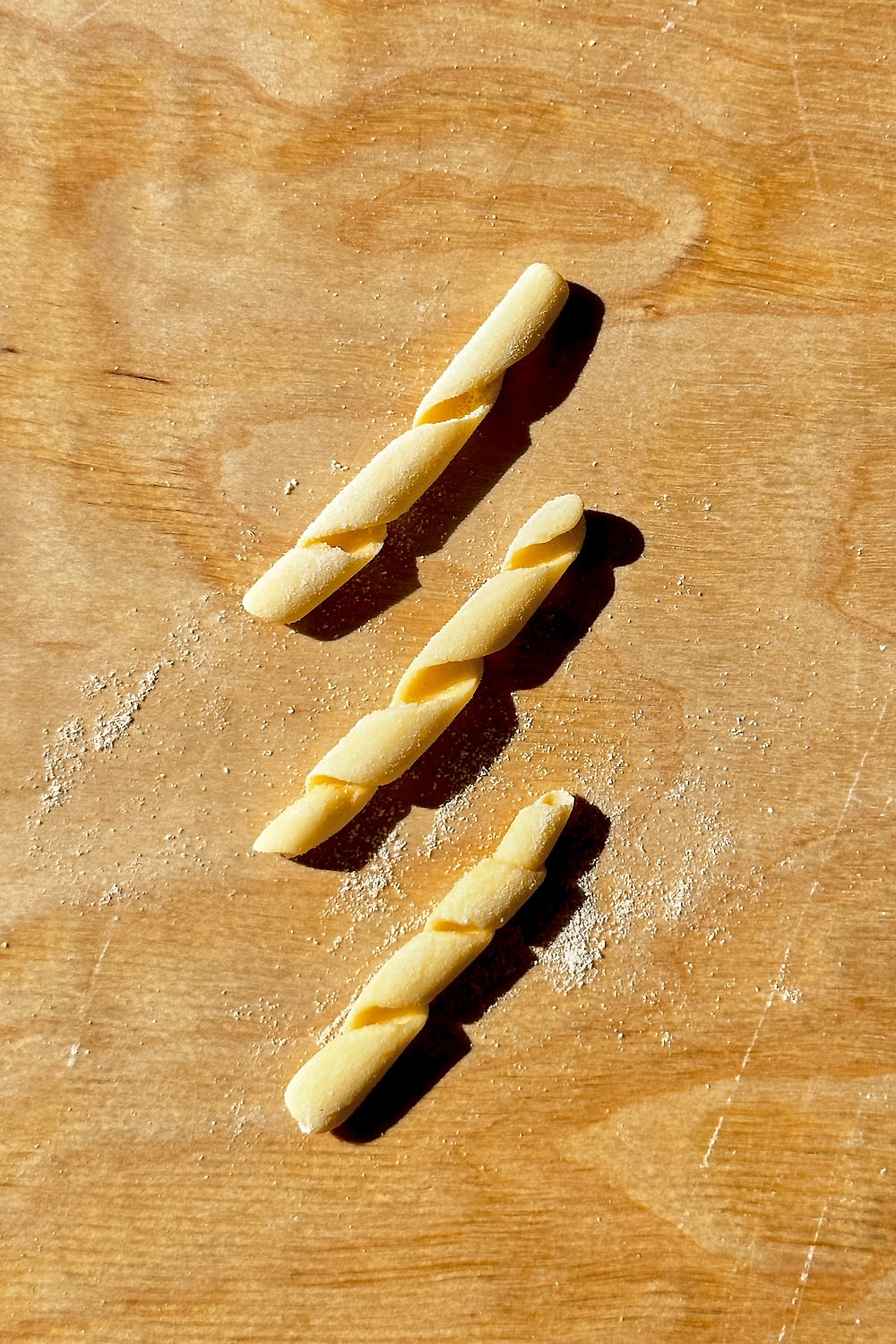
Step 4
Dust a baking tray with semolina flour and lay the Busiate out in a single layer. Let the pasta air dry for about an hour before cooking. This firms up the pasta and helps it maintain its shape when cooked. If you want to store the pasta for later use, you can freeze it on the baking tray for a couple of hours until solid. Then, transfer the pasta to a freezer bag to save space.
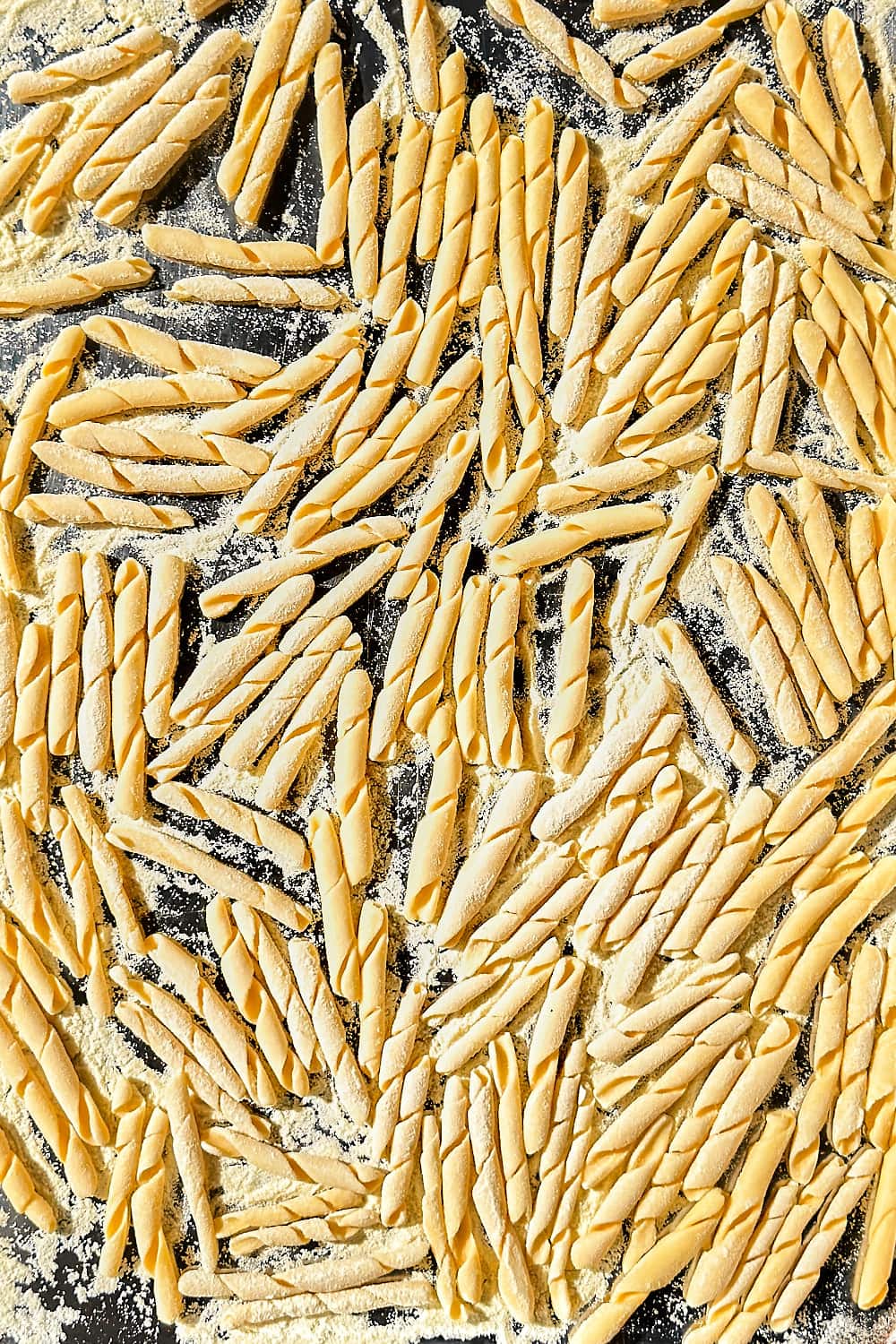
Step 5
When you are ready to cook the pasta, bring a large pot of water to a rolling boil. Once it’s boiling, add a generous amount of salt and cook the Busiate for about 2 minutes. Keep in mind that fresh pasta cooks quickly, so check for doneness frequently to avoid overcooking. Drain the pasta with a skimmer and transfer it to a pan with a pasta sauce of your choice. Toss and stir until the pasta is evenly coated with sauce, and serve immediately.
Tips & Tricks
More Pasta Recipes You May Like:
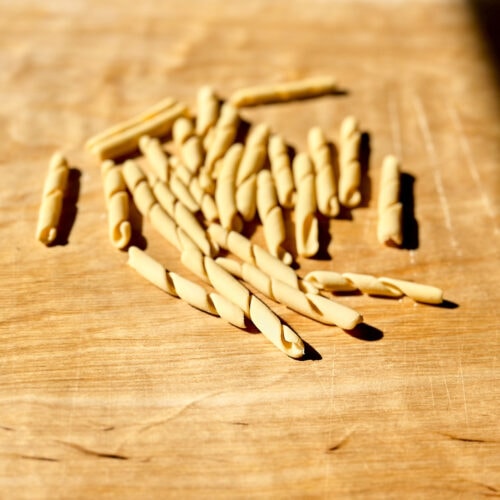
Homemade Busiate Pasta
Equipment
- bench scraper
- wooden skewer
- Baking tray
Ingredients
- 200 g semolina flour – finely milled ("Semola rimacinata di grano duro)
- 100 g water – warm
Instructions
- Prepare the pasta dough: In a mixing bowl, combine the semolina flour and water. Using a fork, stir to combine the ingredients until it turns into a chunky mass. Dump the mixture out onto your work surface and bring everything together with your hands. Knead for a couple of minutes until a shaggy dough forms. Wrap the dough in plastic wrap and let it rest for about 10 minutes. This first bench rest allows the flour to fully absorb the water, which makes the dough softer and more manageable. After the first rest, unwrap the dough and knead it again for 5 – 7 minutes, until smooth and elastic. Then, tightly wrap it in plastic again and let it rest on your work surface for at least one hour to relax the gluten.
- Cut off a quarter of the dough and keep the rest well wrapped to prevent it from drying out. Using a rolling pin, roll the piece of dough out to an even thickness. Then, use a bench scraper or knife and cut it into strips (about 1 – 2 cm wide). Pinch the strips together with your thumb and index finger to form strands, and then roll them out into long, thin ropes. This process is very similar to making homemade Pici pasta.
- Cut the pasta ropes into smaller pieces (about 7 cm long). Lay one piece of dough on your work surface in a vertical position, facing you. Place the wooden skewer diagonally to the top end of the pasta strand (at a 45° angle). Wrap the tip of the pasta strand around the skewer, and then coil the rest of the dough around it by using one hand to gently roll the skewer down towards you. Once the dough is fully wrapped around the rod, use your palm to briefly roll the skewer back and forth, using light pressure. Then, carefully slide the pasta off the skewer and repeat the process with the remaining dough.
- Dust a baking tray with semolina flour and lay the Busiate out in a single layer. Let the pasta air dry for about an hour before cooking. This firms up the pasta and helps it maintain its shape when cooked. If you want to store the pasta for later use, you can freeze it on the baking tray for a couple of hours until solid. Then, transfer the pasta to a freezer bag to save space.
- When you are ready to cook the pasta, bring a large pot of water to a rolling boil. Once it’s boiling, add a generous amount of salt and cook the Busiate for about 2 minutes. Keep in mind that fresh pasta cooks quickly, so check for doneness frequently to avoid overcooking. Drain the pasta with a skimmer and transfer it to a pan with a pasta sauce of your choice. Toss and stir until the pasta is evenly coated with sauce, and serve immediately.

